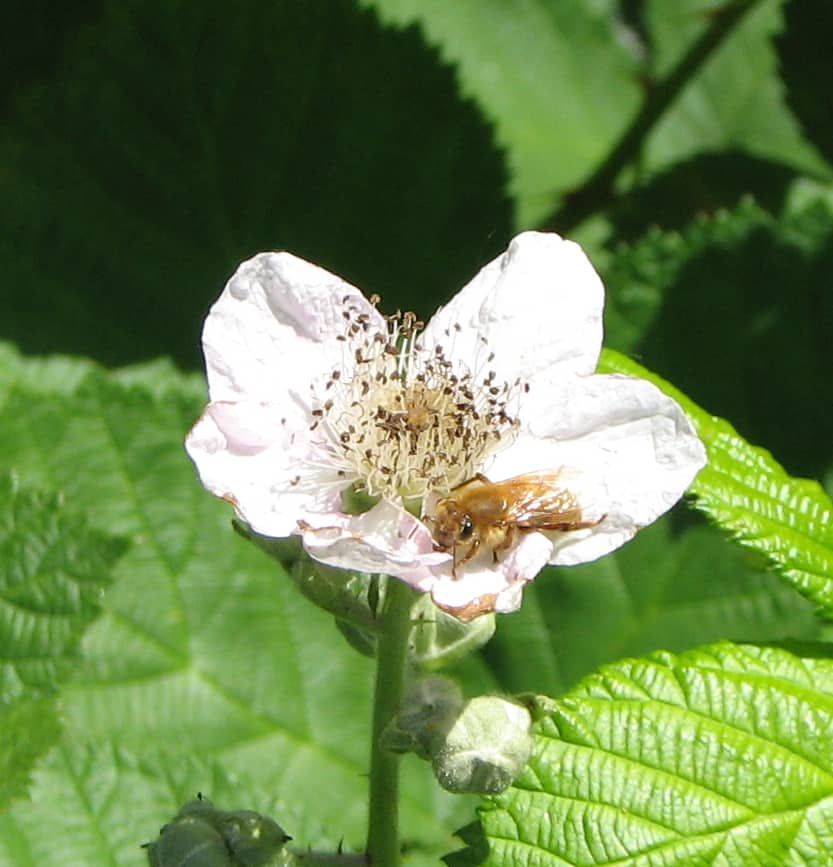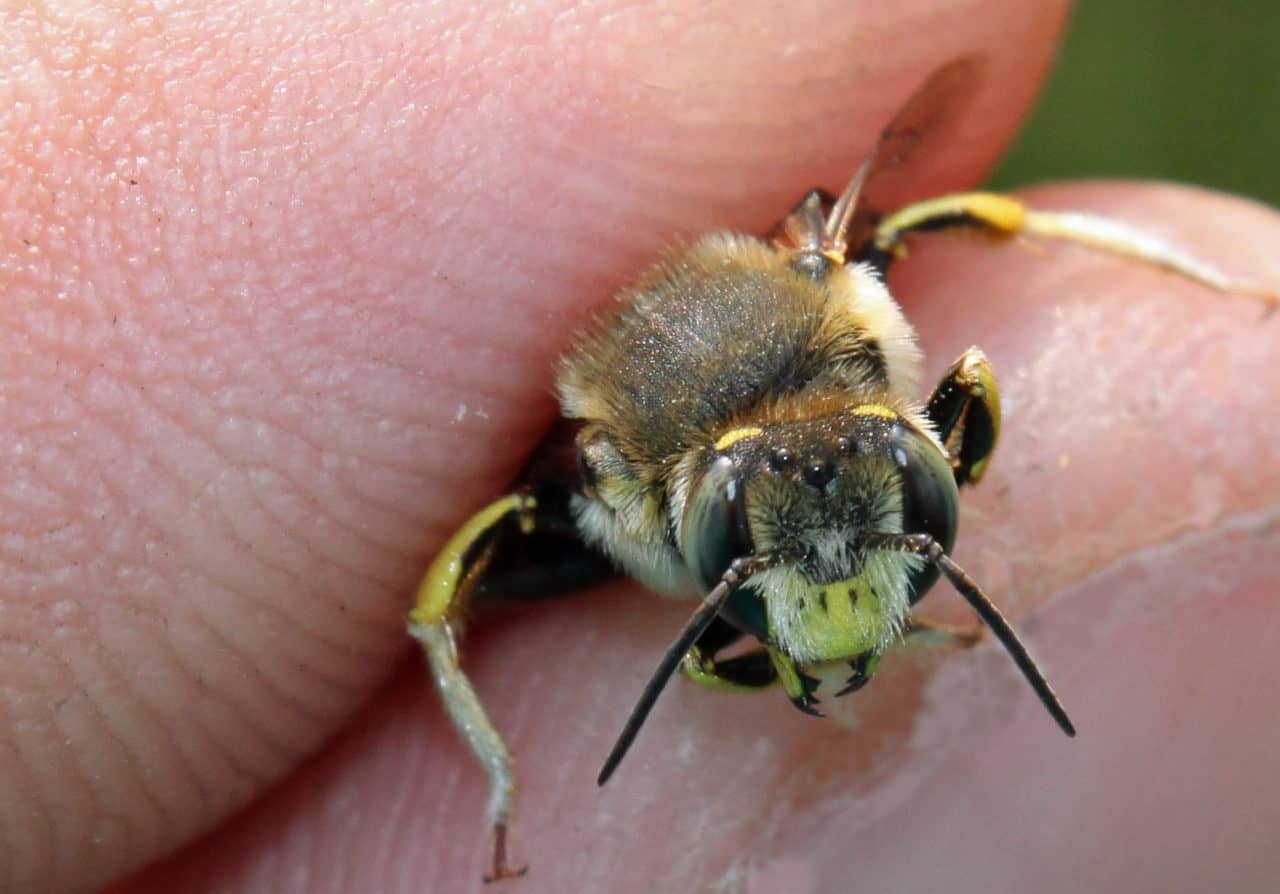When someone informs you of a swarm, it is critical that you ask some important questions and take down some information before heading out to catch it. These important items include the following: • You need to know the height of the swarm to determine if you can reach it by standing or if a ladder will be required. • It is also important to determine that they are actual honey bees; the best way to do this is ask questions. Many calls come in but in fact, are for wasp nests or some other insect. • Are they on a branch you can cut…
Category: Basic Beekeeping
Entrance Reducers
What is the purpose of an entrance reducer? Entrance reducers can be used for different things at different times of the year. Entrance reducers are most commonly used in the fall when forage becomes limited and bee traffic slows down. It is also important to seal up any other holes in the colony around this time of the year to prevent robbing or access for pests. Beekeepers will decrease the size of hive entrances to limit the space that the bees have to protect. They also change the temperature and ventilation unless using screen bottom boards. Reducers can keep unwanted pest like chipmunks and mice…
Tying Knots
Knots can be an important part of keeping bees, which is kind of unfortunate for me since I really struggle with both learning and remembering how to tie different types of knots. One beekeeper we went to had issues in the past with lids flying off die to wind. Their solution was to use rope to keeps the lids down and protecting the inside of the colonies, so we had to learn how to tie the knots to properly close up the colonies after sampling. I took a few pictures to help me remember. The ropes are long enough to reach under the pallet the…
Beekeeping Video Game to Identify Brood Stages
OK, so maybe its not technically a video game, but Reed Johnson at Ohio State has developed an online program called Broodmapper.com to inspect brood frames. Citizen science is a term used describe similar projects, where the general public participates in the collection and analysis of data. Often the tasks include an educational component. In Broodmapper.com, you can learn or hone your skills in identifying eggs, brood age, diseased larvae, and other states you are likely to need to know when inspecting honey bee colonies. Once you complete a tutorial that shows you how to do these things, you can then apply your skills to…
Certified Production in Honey Bees
Product certification is a process designed to give some level of assurance to consumers that a product is produced under certain guidelines. In honey bees, we tend to most often think about USDA Organic certification of honey. However, there are other certification programs in honey bees including Certified Naturally Grown (CNG) and queens produced by the Russian Honeybee Breeders Association. I was recently asked to inspect a new Certified Naturally Grown apiary to provide confirmation that the beekeeper was following their definition of a "natural" product, defined mostly by the absence of "any synthetic herbicides, pesticides, fertilizers, antibiotics, hormones, or genetically modified organisms". The…
Honey without Pollen
There has been an article circulating the bee world that I find really interesting and a bit disturbing. It is about how much of the honey purchased in stores lacks pollen. What happens is during the filtration stage of honey extraction, the company uses a really fine filter to remove anything that isn’t honey, so pollen, wax, propolis, bee parts, etc. To get it through the fine filter, it needs to be heated pretty high, which changes the taste of the honey. I am a big fan of straining out the random bee bits in the honey, but, to me, removing the pollen from honey…
How to collect bees
Before going out to collect bees there are a few things that you will need. Some of items are essential for collecting faster flying specimens. You should have small lidded containers to place the bees in. If you put small pieces of tissue in the container, those pieces give the bees something to hold on to and prevent the bees from becoming wet from regurgitated nectar. Using a net is the easiest method to collect bees. Try to avoid decapitating flower heads when collecting bees. One way to do this is to watch the direction that the bees fly away from the floral source and…
…Continued: Eggs, Larvae, Pupae, Queen
Over the last few weeks I have been writing about the importance of hive inspections and field notes covering some of the attributes of the hive one might choose to identify, observe, interpret, and record. I introduced the attributes in a blog that included an example of the field data sheets we use during our inspections. In the weeks following the initial blog, entitled “Field Notes and Hive Inspection”, I briefly touched on how to estimate a hives’ adult population in terms of frames of bees and how to spot eggs in the cells of the brood nest. The previous blog on eggs, larvae, pupae,…
Eggs, Larvae, Pupae, and the Queen
See snapshots and more detail about the picture and gigapan technology at gigapan.org Double click on the comb of the honey bee frame in the picture above to see if you can spot eggs in the cells. Double clicking will zoom in to reveal much more detail. Katie, Rob, and I have started contacting and visiting bee breeders in Northern California to inspect and test colonies of bees from their breeder pools. Inspection requires that we observe the status of the queen in each colony within an operations’ breeder pool. The queen can be elusive and I have had several beekeepers tell me that you…
Pesticide Kill
Northern California is a beautiful place. I am located in the Sacramento Valley between the Sierra Nevada and Northern Coastal mountain ranges. The good soils partnered with a Mediterranean climate makes the Central Valley (the northern Sacramento Valley and the southern San Joaquin Valley) one of the most agriculturally productive regions in the world. The intense food production means it is a breeding ground for insect pests that feed on the crops. Growers need to control these pests in order to produce a viable crop. One repercussion of this is sometimes beneficial insects take a hit. This is what I saw on a visit to…


